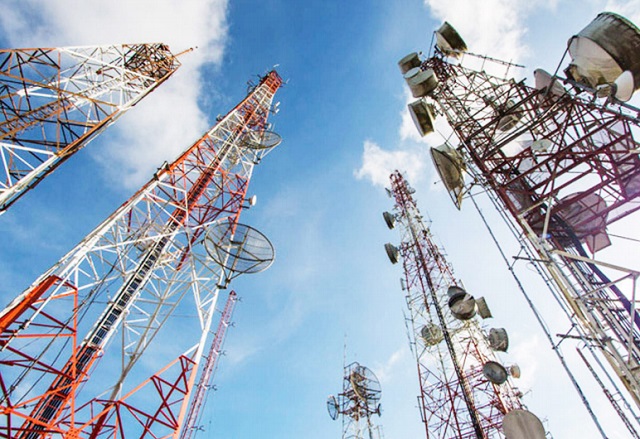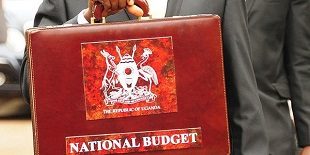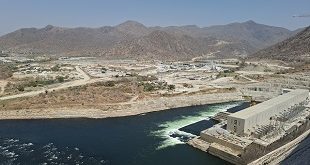
What needs to be done to cut it
| CLEMENT PRINCE ADDO | All over the world, the internet has provided extraordinary socioeconomic opportunities to businesses, governments, and individuals. But less developed countries still face numerous obstacles to maximise its potential. The problems range from obsolete infrastructure, the non-availability, non-accessibility, cost, power fluctuations, policies and regulation.
Many countries on the continent still have bandwidth as low as 64 kilobits. This is in contrast to the 270,000 megabits per second in the U.S. Data also shows that downloading a 5GB movie took 734 minutes in the Republic of Congo, 788 minutes in Sao Tome, 850 minutes in Ethiopia, 965 minutes in Niger and 1,342 minutes in Equatorial Guinea. Singapore is the fastest, taking about 11 minutes and 8 seconds to download a typical 5GB high-definition movie. In certain situations, bandwidths for the entire country is less than what is available to an individual residential subscriber in the U.S.
Similarly, African countries are listed among those with the lowest internet speed yet with the most expensive communication and internet cost in the world.
The Island nation of Madagascar has the fastest internet speed in Africa with broadband speeds of 32.07 Mbps, according to Ookla; a company that specialises in internet speed testing. It is followed by the Seychelles at 26.76 Mbps, and Ghana at 23.98 Mbps. Uganda has broadband speeds of 16.01 Mbps; the fastest in the East African Community states. Kenya follows closely at 15.05 Mbps, Tanzania 12.95 Mbps, and Rwanda 12.62 Mbps. Ethiopia has broadband speeds of 14.13 Mbps and South Africa 23.17 Mbps.
Meanwhile, Singapore has the fastest broadband speeds in the world of 191.93 Mbps, followed by South Korea, and Taiwan. The United States has broadband speeds of 115.67 Mbps.
According to Mobile Broadband Pricing Data for Q2 2019 by the Alliance for Affordable Internet most of the countries with the most expensive communication and internet cost in the world are on the African continent. Top on the list is Equatorial Guinea where 1GB of data costs the equivalent of US$12.48, Zimbabwe US$15, Chad US$11.99, and Libya US$11.37. In the East African region, South Sudan has the highest cost at the equivalent of US$5.36 per 1GB of data, followed by Tanzania at US$4.34, Kenya US$4.19 and Uganda at US$4.00. In Rwanda 1GB of data costs the equivalent of US$2.21 and in Ethiopia it is US$3.28 and Burundi US$3.17.
Fast and affordable internet speeds are a must in the modern world since internet usage is at the core of most communication and interactivity activities. Most people use the internet to share social, administrative, and business information. Many people pay bills, working remotely, or even meeting new friends and love interests. Students at all levels use the internet to research academic assignments, and many use it to watch videos online.
The internet of today is faster than ever thanks to new technologies. This faster internet allows people to watch TV shows and movies on their phones, download large files and pull up multiple tabs to multitask. Ookla says internet speeds rose by an average 30% in 2017.
Africa is on record to have had the fastest growing mobile telecommunication market over the years. But the continent still has the lowest mobile penetration.
According to the GSM Association (GSMA); a trade body that represents the interests of the Global System for Mobile Communications network operators worldwide, Sub-Saharan Africa will remain the fastest growing region, with a CAGR of 4.6% and an additional 167 million subscribers over the period to 2025. This will take the total subscriber base to just over 600 million, representing around half the population.
It projected that during 2019, 3G will overtake 2G to become the leading mobile technology in the region, with just over 45% of total connections by the end of the year. 3G adoption has doubled over the last two years as a result of network coverage expansion and cheaper devices.
The GSMA also saw mobile-enabled platforms increasingly disrupting traditional value chains in different verticals across the region. These platforms – mostly developed by a rapidly expanding local tech start-up ecosystem – aim to eliminate inefficiencies in conventional business models, as well as extend the reach of services and provide greater choice to customers.
And developments in Africa’s telecommunications sector happen in cities and urban centres. Service providers argue that it’s not economically feasible to roll out a network to cover an entire country.
New approaches cut costs
But various advanced technologies are emerging to reduce the cost of internet provision and to increase accessibility. They also offer the possibility of developing communication networks in a way that does less harm to the environment.
The approach is called resource virtualisation, where multiple telecommunication services can be provided by less physical infrastructure. Since the chunk of the cost transferred to the end-user comes from the cost of power and infrastructural management, this approach can reduce the operational cost, improve accessibility and cut the cost to the end user.
Rethinking how masts are sited
Like every architectural work, telecommunication masts must meet specific constructional requirements, including choice of location and risk analysis. But unregulated construction is typical in many parts of Africa. Even where regulatory bodies exist, many media and communication masts are sited within very short distances and hilly grounds in big cities.
This is true in Ghana too where in an urban environment it’s possible to see 10 masts within close proximity to one another. This does not necessarily guarantee quality service. In addition, it poses a severe environmental and physical risk.
Masts are also expensive to put up.
It stands to reason, therefore, that having fewer masts, hence using less energy and doing less damage to the environment would be the optimal way forward.
I have been involved in developing a framework along with other colleagues that can help policymakers demarcate, and zone major cities – or the whole country into zones. Each zone takes only one mast, owned by an infrastructure provider and shared by multiple service providers.
I focused on telecommunications, but the principle can be applied to TV and radio signal towers too.
My proposal involves a three-level architecture that includes a provider who owns and manages the infrastructure.
At the upper level is a Cloud-RAN macro-base station. A provider like the state regulator, can own and manage the data from the base station.
The macro base station is responsible for managing the system’s energy, bandwidth allocation, and flow management, including the handover in intra and inter mast zones. At the middle level, service providers focus on providing tailored and quality of service to their users. The service providers will not have to spend their resources on managing the infrastructure they only have to deal with how to satisfy users. The user on the third level has to only deal with the service providers.
This framework will bring an end to uncontrolled mast deployment seen in many African countries. It would allow for power and bandwidth sharing among multiple service providers and would reduce the need for multiple masts. Traffic would be scheduled over limited masts or access points that reduce the system energy consumption and improve efficiency. The general impact on the environment would also be reduced.
Service providers could then focus on end-users and not on infrastructures.
****
Clement Prince Addo is a PhD Researcher, University of Electronic Science and Technology of China
Source: theconversation (slightly edited for relevancy).
 The Independent Uganda: You get the Truth we Pay the Price
The Independent Uganda: You get the Truth we Pay the Price


